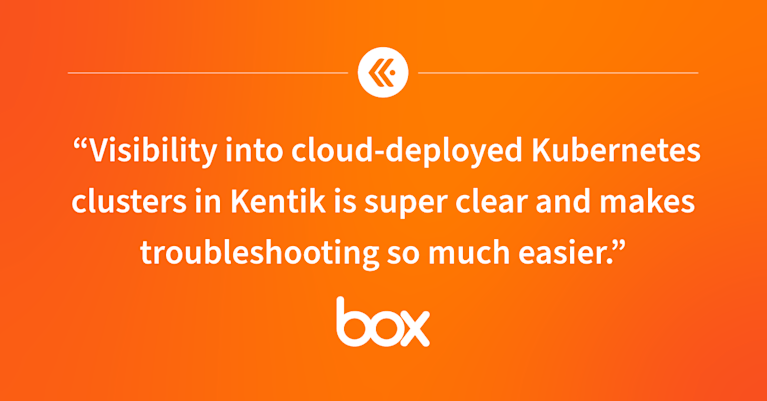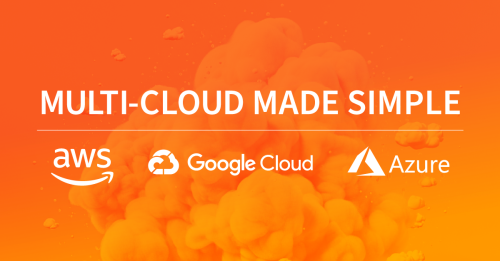Cloud Cost Optimization Best Practices


Best practices to master cloud cost optimizationSet budgets and monitor both idle services and cost anomaliesIntegrate cloud cost optimization in your software development lifecycleAnalyze cost attribution and usage to rightsize hybrid cloud capacity and failoverEfficiently transfer cloud traffic with full visibility, low costs, and no sprawlBalance cost and performance with real-time analysis during and after migrationOptimize hybrid cloud interconnect capacityPlan migrations by understanding baseline traffic and dependenciesMonitor, test, and optimize the performance of interconnect traffic between cloud and data centerTune capacity and redundancy based on workloads and traffic shiftsUse reserved and spot instances for cost-efficient capacity planningConclusion
Summary
Businesses are rapidly transitioning to the cloud, making effective cloud cost management vital. This article discusses best practices that you can use to help reduce cloud costs.
Businesses that have transitioned to the cloud are starting to re-evaluate their cloud strategy to manage application performance and unexpected cloud expenses. You’re likely already aware that companies must invest significantly in their cloud infrastructures. However, these investments can swiftly go to waste if not optimized.
Additionally, cloud cost optimization isn’t just about reducing costs; it’s about efficiently allocating resources and optimizing network access to those resources to maximize value without compromising performance or security.
That’s why this guide focuses on best practices you can use to decrease your cloud costs and optimize your resources. By the end of this article, you’ll understand several strategies that will help ensure you’re getting the most bang for your buck in your cloud environment.
Best practices to master cloud cost optimization
The following best practices will teach you how to optimize your cloud cost and, when implemented, will ensure efficient resource utilization and maximize your company’s return on investment.
Set budgets and monitor both idle services and cost anomalies
Keeping a close eye on your cloud cost spending is critical. In the same way you’d establish a budget for a project or department in your organization, you should also set a budget for your cloud resources. This budget not only keeps you in check financially but fosters a culture of accountability and efficiency.
For instance, imagine a scenario where one of your applications has been erroneously deploying redundant instances due to a misconfigured automation script. Over a month, this could amount to considerable, unplanned costs. When you set a budget and actively monitor it, you can promptly identify and rectify such issues, avoiding potential financial pitfalls.
To set budgets and monitor services and anomalies, consider implementing the following:
- Define clear budget parameters: Begin by understanding your cloud spending patterns. Assess past bills, factor in planned projects, and set a realistic yet stringent budget. Tools like AWS Budgets or Microsoft Cost Management can assist in this process.
- Monitor idle resources: Regularly audit your cloud resources. Look for unused or underutilized instances, storage volumes, or services. Implement automated scripts or use tools like the Google Cloud Idle VMs report to flag and take action on these resources.
- Set up alerts: Establish threshold-based alerts for when your spending reaches a certain percentage of the budget (ie 75 percent or 90 percent), allowing ample time to assess and react before potential overruns. Most cloud providers offer built-in mechanisms for this, such as Amazon SNS notifications for AWS Budgets.
- Analyze and rectify anomalies: If your monitoring tools detect unusual spikes in usage or costs, don’t ignore them. Dive deep to find the root cause (ie a misconfigured service, an unnoticed DDoS attack, or any other anomaly).

Integrate cloud cost optimization in your software development lifecycle
As the development lifecycle evolves, so does the need to ensure that each phase is optimized for cloud resource usage. By embedding cost optimization practices into your software development lifecycle (SDLC), you can ensure that resources are used efficiently from development to deployment.
Consider a DevOps team that develops a feature-heavy application, only to realize post-deployment that it consumes three times the anticipated cloud resources. The culprit? Non-optimized code and redundant database queries. This scenario could have been avoided with proactive cost considerations at each SDLC phase.
Consider the following points to help you integrate cloud cost optimization in your SDLC:
- Requirement analysis: At this initial stage, outline the cloud resources that will be required. For example, factor in database scaling and storage needs if you’re developing a data-intensive application.
- Design and planning: Design your application architecture with scalability and efficiency in mind. Opt for serverless architectures or microservices where feasible, as they can scale according to demand, often resulting in cost savings.
- Development: Train your developers to write efficient, modular code. Implement code reviews focusing not only on functionality but also on resource optimization. Use tools that can identify resource-heavy code snippets, such as JProfiler in Java or built-in profiler tool in Node.js.
- Testing: During your testing phase, check for functionality and monitor how the application impacts cloud resource consumption. Tools like the AWS Cost Explorer can provide insights into how specific services consume resources during test runs.
- Deployment: Optimize your deployment strategies. Strategies such as blue-green deployments or canary releases can be used to ensure you’re not provisioning unnecessary resources during the rollout.
- Maintenance: Regularly review and refactor your code. Older applications might be running on outdated services or architectures that are no longer cost-effective. Upgrading or transitioning to newer, more efficient services can yield significant savings.
Analyze cost attribution and usage to rightsize hybrid cloud capacity and failover
Optimizing a hybrid cloud environment can be particularly challenging, given the interplay between on-premises, private cloud, and public cloud resources. The key is understanding cost attribution and accurately size your capacities for primary operations and failover scenarios.
Imagine a company that’s overprovisioned its private cloud, assuming high traffic. Concurrently, it’s underprovisioned its public cloud failover capacity. During an unexpected traffic spike, the public cloud resources are quickly overwhelmed, causing significant downtime and lost revenue. A proper analysis of cost attribution and resource usage would have painted a clearer picture of actual needs.
To help you analyze cost attribution, consider implementing the following:
- Understand your workloads: Start by identifying which applications and workloads are best suited for private clouds and which can be shifted to public clouds. Some sensitive applications need the security of a private cloud, while more scalable, consumer-facing apps could benefit from the elasticity of public clouds.
- Monitor usage patterns: Regularly monitor the usage patterns of your workloads. Utilize tools that provide insights into peak usage times, idle times, and resource demands. This data is invaluable in rightsizing your capacities.
- Implement cost attribution tools: Use tools that can break down costs by departments, teams, projects, or even individual applications. Platforms like CloudHealth or Cloudability can provide granular insights into where your cloud costs are originating.
Efficiently transfer cloud traffic with full visibility, low costs, and no sprawl
Migrating and managing data traffic between public and private clouds is critical to hybrid cloud architectures. Achieving this with complete visibility while minimizing costs requires a strategic approach.
For instance, consider a scenario where a company transfers large data sets between clouds without a traffic management strategy. Soon, they’re hit with hefty data transfer fees, and to compound the issue, they can’t pinpoint the exact sources of high costs due to a lack of visibility. This lack of control can also lead to cloud sprawl—an uncontrolled proliferation of cloud instances, storage, or services.
To mitigate this scenario and help efficiently manage data traffic, consider implementing the following:
- Audit data movement patterns: Understand what data needs to be moved, how frequently, and why. Regularly auditing this can help you spot inefficiencies or redundancies in your data transfer patterns.
- Implement traffic visibility tools: Platforms like Amazon VPC Flow Logs provide insights into your cloud traffic, allowing you to monitor and optimize data transfers effectively.
- Localize data when possible: Keep data closer to its primary point of use. If most of your users or applications are in a specific region, try to store the data in the same region to reduce inter-region data transfer costs.
- Control cloud sprawl: Implement strict governance policies. Tools like AWS Service Catalog or Azure Policy can help enforce rules on which services can be provisioned, reducing the risk of unnecessary resource proliferation.
Balance cost and performance with real-time analysis during and after migration
Navigating the constant juggling act between performance and costs is an ongoing challenge in cloud management. This equilibrium becomes even more crucial during workload migrations, as unexpected costs or performance hiccups can significantly disrupt operations.
Consider a business migrating a mission-critical application to a new cloud provider. With real-time analysis during this migration, they could avoid overspending on resources or end up with insufficient capacity, leading to poor application performance. Real-time monitoring can act as a safety net, ensuring neither scenario unfolds.
Consider implementing the following best practices to help you navigate this constant juggling act:
- Define performance metrics: Outline the key performance indicators (KPIs) crucial for your workloads before migrating. This could include response times, availability percentages, or error rates.
- Deploy real-time monitoring tools: Platforms like New Relic or Grafana can provide live insights into how your workloads are performing during migration. These tools can alert you to potential issues before they escalate.
- Opt for incremental migrations: Transfer workloads in phases instead of migrating everything simultaneously. This allows you to monitor and adjust in real time, ensuring each migration phase is optimized for cost and performance.
- Optimize over time: The cloud is dynamic. Regularly review the performance and costs of your migrated workloads. As you gather more data, refine your resource allocation strategies to maintain the delicate balance.
Optimize hybrid cloud interconnect capacity
For organizations leveraging a hybrid cloud model, the capacity of interconnections between their on-premise infrastructure, private clouds, and public clouds is crucial. An optimized interconnect ensures seamless operations, high availability, and efficient resource usage.
For instance, consider a hypothetical enterprise that has applications split across private and public clouds. These applications frequently communicate, but performance degrades due to a bottleneck in the interconnect, especially during peak times. Had the interconnect capacity been optimized, such a performance hit could have been avoided.
Following are a few ways you can optimize hybrid cloud interconnect:
- Assess traffic patterns: Regularly review the volume and nature of traffic flowing between your on-premises infrastructure and cloud setups. This gives you insights into the required interconnect capacity.
- Scale as needed: Interconnect capacity shouldn’t be static. During times of expected high traffic, scale up the capacity and then scale it down again during off-peak times. This dynamic approach ensures you’re only paying for what you need.
- Regularly review SLAs: The service level agreements (SLAs) associated with your interconnects should be reviewed periodically. Ensure they align with your current requirements, and don’t hesitate to renegotiate if necessary.
Plan migrations by understanding baseline traffic and dependencies
Migrating workloads to or between cloud environments is no trivial task. The foundation of a smooth migration lies in understanding the baseline traffic and the interdependencies of applications and services.
Imagine an e-commerce company migrating its inventory management system without considering its dependency on the billing system. During the migration, the inventory system gets momentarily disconnected from the billing system, resulting in failed transactions and lost revenue. Such pitfalls can be avoided by having a clear map of traffic and dependencies.
Use the following best practices to help you understand baseline traffic and dependencies:
- Conduct a traffic baseline analysis: Before any migration, assess the regular traffic patterns of the applications or services in question. Tools like Kentik can provide historical data that can help plan migration schedules with minimal disruption.
- Map out dependencies: Understand how different applications, databases, and services communicate with each other. Tools like Dynatrace or AppDynamics can help visualize these dependencies, ensuring no crucial links are broken during migration.
- Choose the right migration window: Pick a migration window during off-peak hours (based on the baseline traffic analysis) to minimize potential disruptions to end users or other services.
- Test in staging environments: Replicate the process in a staging environment before the actual migration. This highlights any potential issues or gaps in the migration plan.
- Communicate and coordinate: Ensure that all relevant teams (DevOps, NetOps, or IT support) are in the loop. Clear communication ensures everyone is on the same page and ready to address any unforeseen issues promptly.
- Monitor actively during migration: Keep a close eye on the migration process. Real-time monitoring tools can provide insights into bottlenecks, failures, or performance degradation, allowing for swift remediation.
Monitor, test, and optimize the performance of interconnect traffic between cloud and data center
The bridge between your traditional data center and the cloud is not merely a data highway; it’s the lifeline of your hybrid operations. Ensuring its optimal performance is paramount for the seamless functioning of your applications and services.
For instance, consider a financial firm that relies on real-time data feeds from its data center to its cloud-based analytics platform. Any latency or disruption in this interconnect could delay crucial investment decisions, resulting in potential losses. The importance of consistent monitoring and optimization can’t be overstated.
Implement the following best practices to help you monitor, test, and optimize the performance of interconnect traffic:
- Deploy traffic monitoring tools: Utilize monitoring tools such as Kentik to gain insights into the traffic flow between your data center, the cloud, and traffic between and among multiple clouds.
- Establish performance benchmarks: Define the interconnect’s acceptable latency, throughput, and error rates. This provides a baseline against which to measure and optimize.
- Conduct regular stress tests: Simulate high-traffic scenarios to understand how the interconnect performs under load. This can help you spot potential bottlenecks or weak points.
- Proactively address issues: Don’t wait for problems to escalate. If monitoring tools indicate a potential issue, address it immediately. This proactive approach reduces downtime and ensures optimal performance.
Tune capacity and redundancy based on workloads and traffic shifts
In a dynamic cloud environment, the only constant is change. As your business evolves, so will its demands on the cloud infrastructure. Actively tuning capacity and ensuring redundancy becomes vital to keeping costs in check while maintaining performance.
Consider a streaming service that sees a sudden influx of users due to a hit show’s release. If capacity isn’t adjusted in real time, services could slow down or crash, leading to user dissatisfaction and the possibility of losing subscribers. Conversely, overprovisioning during off-peak times would result in unnecessary costs.
To help tune capacity and redundancy, consider implementing the following best practices:
- Implement dynamic scaling: Most cloud providers, like Amazon Web Services (AWS) and Microsoft Azure, offer autoscaling capabilities. These tools automatically adjust resources based on real-time demand, ensuring performance while optimizing costs.
- Utilize predictive analytics: Use tools like Amazon Forecast to forecast demand based on historical data and trends. Predicting surges allows you to adjust capacity preemptively.
- Perform frequent capacity audits: Regularly assess your infrastructure to identify underutilized resources. Scaling down or decommissioning these can lead to significant cost savings.
- Optimize for seasonality: Adjust your infrastructure if your business experiences seasonal demand fluctuations. For instance, an e-commerce platform might need more resources during holiday sales but can scale down during off-seasons.
Use reserved and spot instances for cost-efficient capacity planning
Cloud cost management isn’t just about the amount of resources you consume but also how you procure and utilize them. Reserved and spot instances offer opportunities to use cloud resources cost-effectively, especially when paired with diligent capacity planning.
Think of an online retail platform that experiences consistent traffic throughout the year but sees significant spikes during sale events. Relying solely on on-demand instances can be costly during regular operations and might not guarantee availability during high-demand periods. A strategic mix of reserved and spot instances can optimize costs and performance.
To that end, consider the following best practices:
- Understand your workloads: Classify your workloads into predictable (consistent usage) and variable (sporadic spikes) categories. This informs your decision on which instance types to use.
- Leverage reserved instances: For predictable workloads, purchase reserved instances. These offer substantial discounts compared to on-demand pricing. Cloud providers like AWS, Azure, and Google Cloud (GCP) offer various reserved instance options with different pricing and flexibility levels.
- Tap into spot instances: Consider using spot instances for short-term, variable workloads. You can bid for these spare cloud resources, often available at a fraction of the on-demand price. However, be mindful that they can be terminated if the resources are needed elsewhere.
- Stay informed on pricing models: Cloud providers frequently adjust their pricing models and introduce new offerings. Keep an eye out for any changes or promotions that can offer better value for your operations.
Conclusion
Cloud cost optimization is not a one-off task but a continuous journey. From setting budgets to leveraging various instance types, there are numerous strategies to ensure you’re getting the most bang for your buck in the cloud environment. Whether you’re a cloud engineer, network engineer, DevOps, or NetOps professional, understanding these best practices can significantly influence your operations’ efficiency, performance, and cost-effectiveness.
As you venture deeper into cloud cost optimization, don’t do it alone. Kentik Cloud can be a powerful ally. Kentik offers unparalleled insights into your cloud utilization, empowering you to make decisions that lead to tangible savings. Why not take the next step? Dive into the world of Kentik and discover how it can be your cornerstone in your cloud cost optimization.


